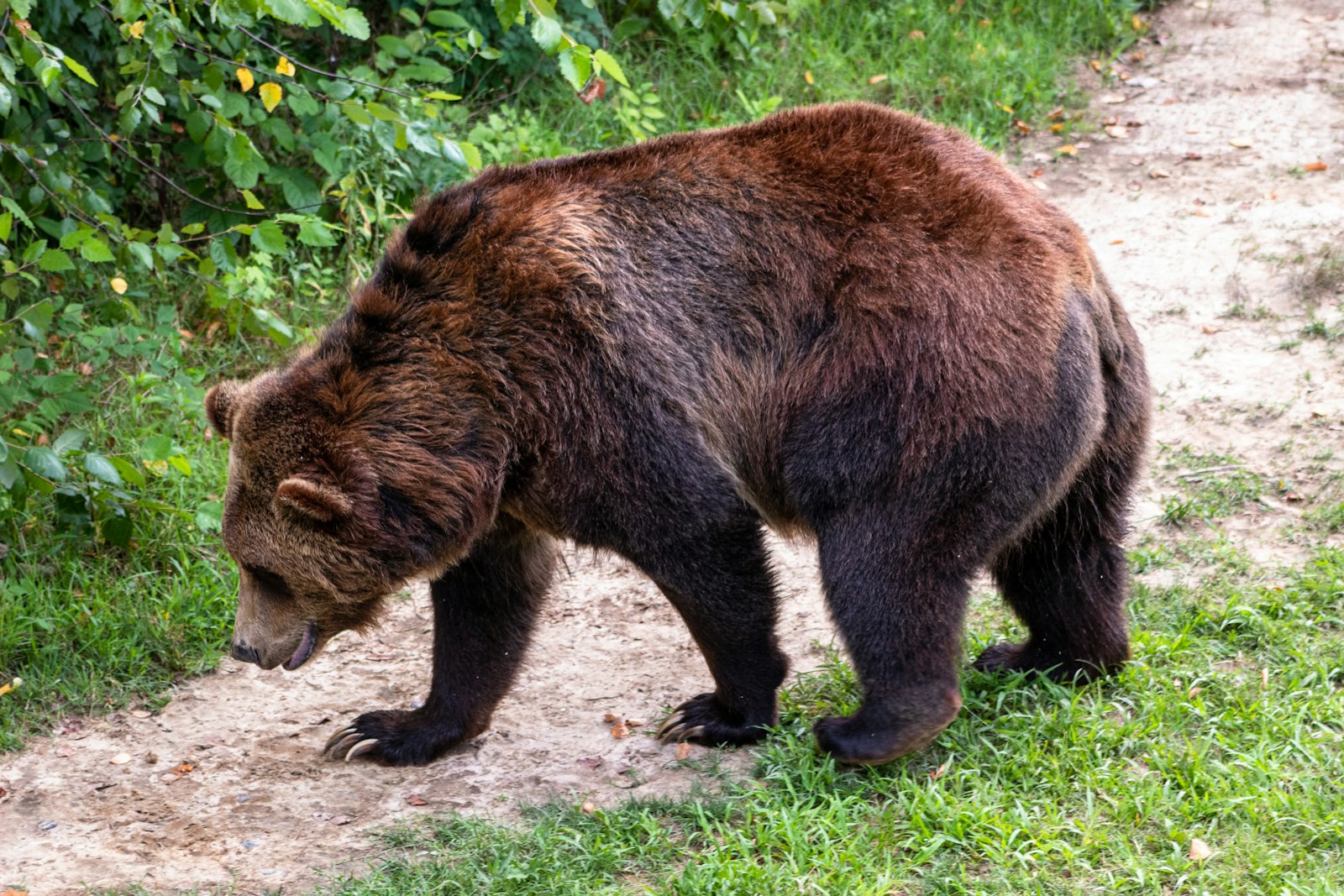Venturing into bear country with your family offers an exhilarating opportunity to experience nature’s majesty while creating lasting memories. However, camping in areas where bears roam requires careful preparation and knowledge to ensure everyone’s safety. Bears, whether black, brown, or grizzly, deserve our respect as we enter their habitat. Understanding proper camping protocols, essential gear, and wildlife etiquette isn’t just recommended—it’s necessary for a harmonious coexistence during your wilderness adventure.
This comprehensive guide covers everything families need to know before pitching their tents in bear territory.
Understanding Bear Behavior and Habitat
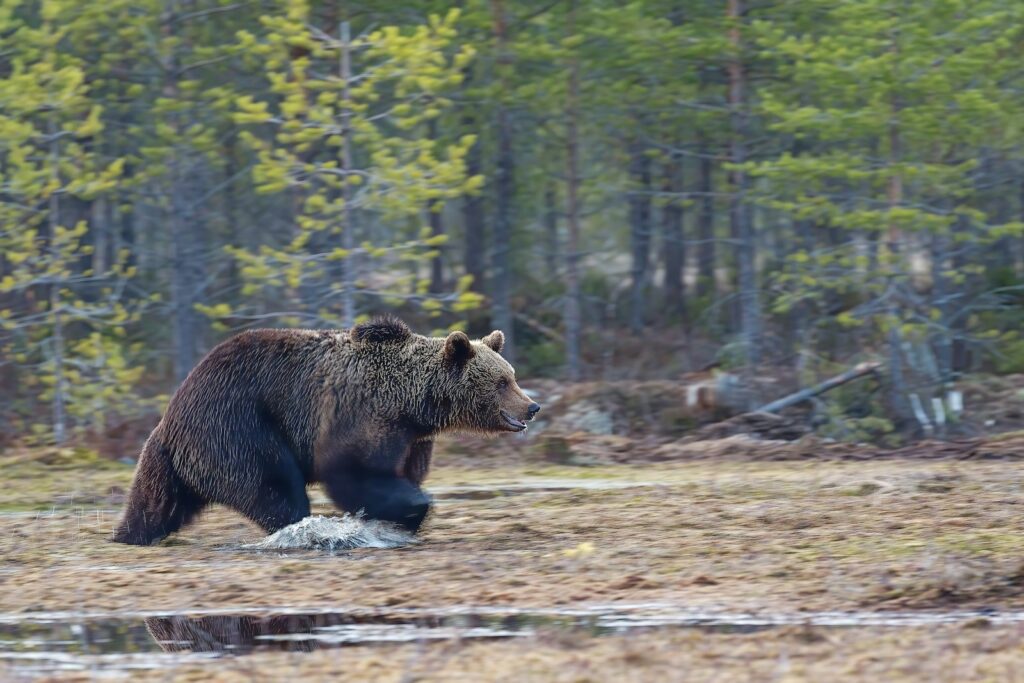
Bears are generally shy creatures that prefer to avoid human interaction, contradicting popular misconceptions about their aggressive nature. North American bear country typically encompasses forested regions across the United States and Canada, with black bears having the largest range and grizzlies primarily inhabiting the Northwest and Alaska. Bears are most active during dawn and dusk (crepuscular), though they can be encountered at any time of day.
Knowing that bears have an exceptional sense of smell—approximately seven times stronger than a bloodhound’s—explains why proper food storage is critical when camping in their territory. Understanding these basic behavioral patterns will help your family recognize potential bear activity and respond appropriately during your camping trip.
Selecting the Right Campsite in Bear Territory
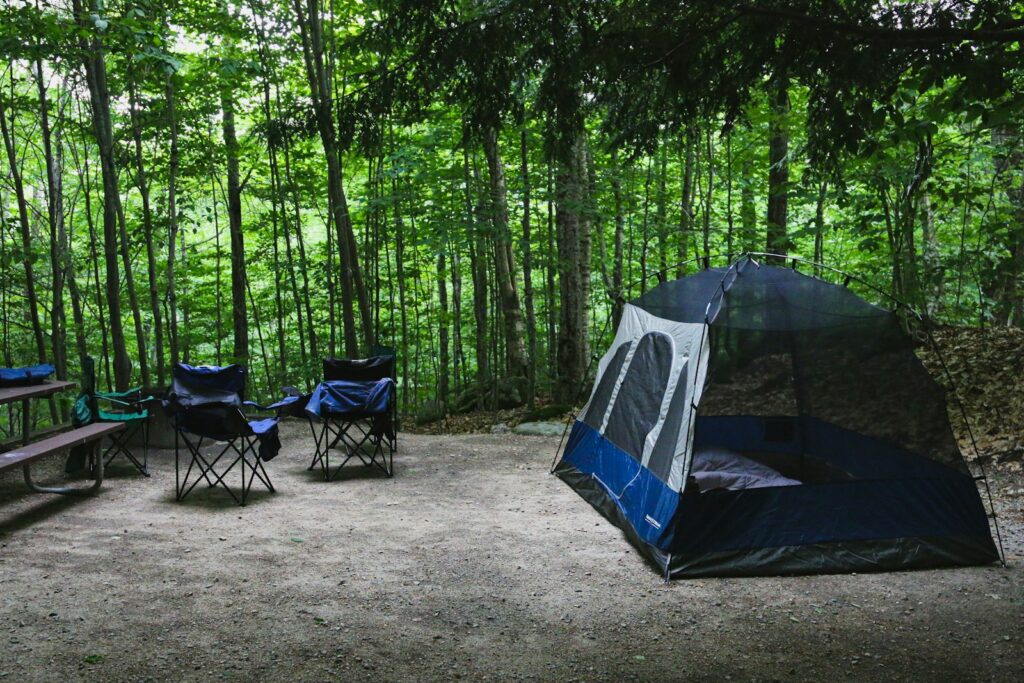
Choosing an appropriate campsite is your first line of defense when camping in bear country. Always select established campsites whenever possible, as these areas typically have infrastructure designed with bear safety in mind, such as designated cooking areas and bear-resistant food storage containers. Position your sleeping area at least 100 yards upwind from your cooking and food storage area to minimize attracting bears to where your family sleeps.
Avoid camping near berry patches, animal carcasses, thick brush, or along game trails where bear encounters are more likely. Before setting up camp, scan the area for signs of bear activity such as tracks, scat, claw marks on trees, or overturned rocks, and relocate if you notice these warning signs.
Essential Bear-Resistant Gear
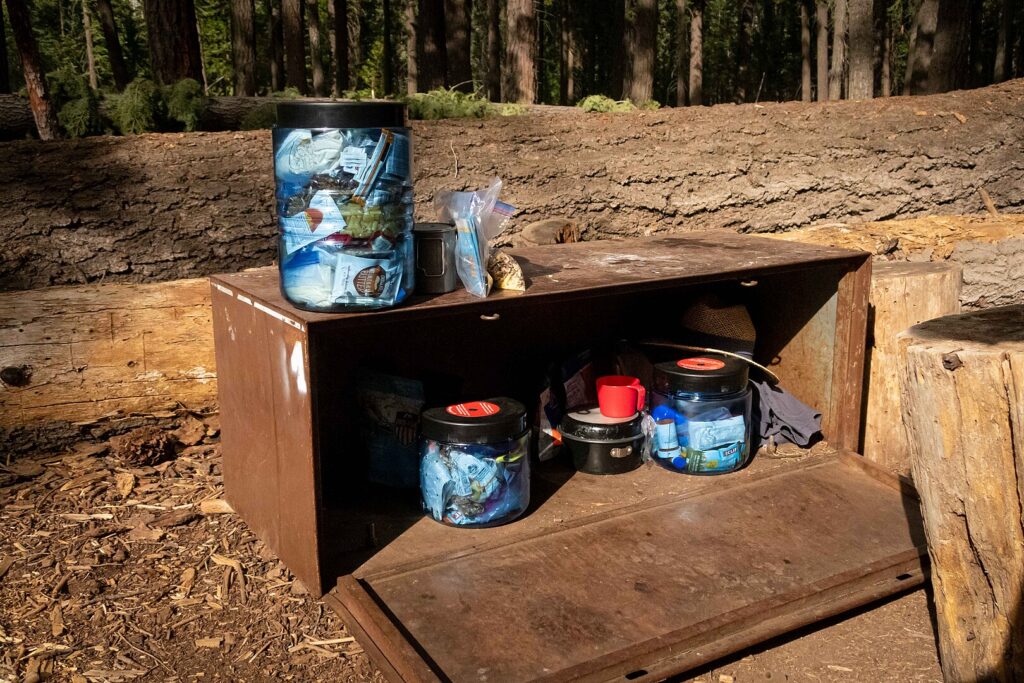
Investing in proper bear-resistant equipment is non-negotiable when camping in bear country with your family. Bear canisters or bear-resistant food containers certified by the Interagency Grizzly Bear Committee (IGBC) are essential for storing all food, toiletries, and scented items. Bear-resistant coolers like those made by Yeti or Pelican provide additional security for perishable foods while camping.
A dedicated bear bag hanging kit with at least 50 feet of parachute cord and a carabiner allows for proper food hanging where bear poles or lockers aren’t available. For added protection, particularly in grizzly territory, consider packing bear spray (with a minimum 1% capsaicin concentration) for each adult in your group, along with holsters that keep the spray accessible at all times.
Family-Friendly Tent Selection and Setup
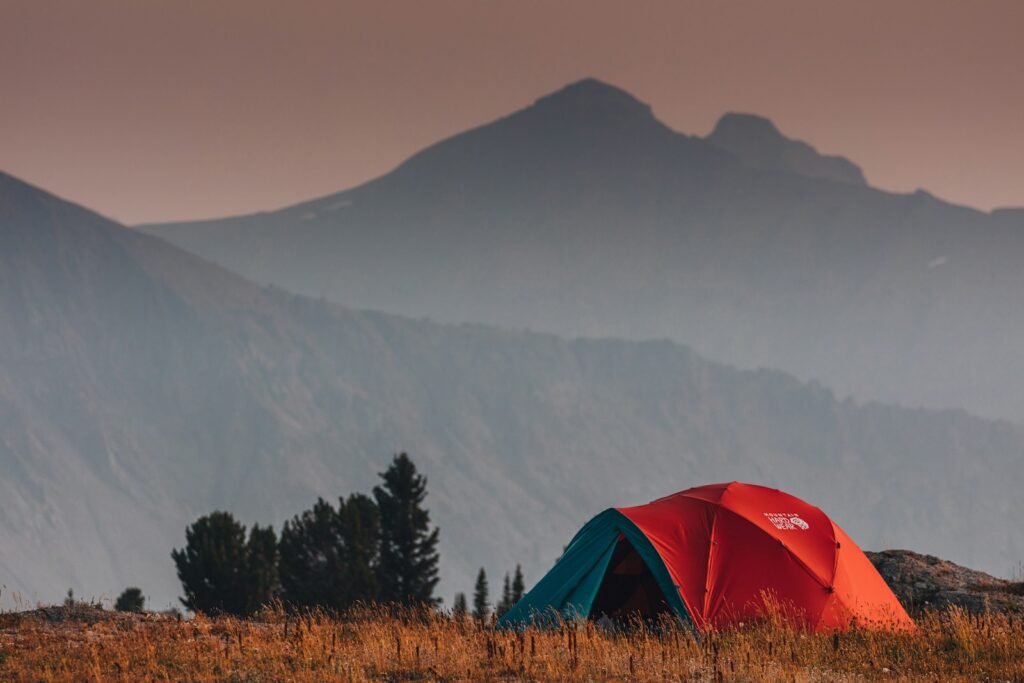
When camping with children in bear country, tent selection deserves special consideration beyond just size and comfort. Choose brightly colored tents that are easily visible and less likely to be accidentally approached by a curious bear. Arrange your campsite with tents positioned close together in a clear area away from dense vegetation where bears might feel comfortable approaching. For families with multiple tents, consider arranging them in a circle with the doors facing inward toward a common area, creating a more defined human space.
Never keep any food, scented items, or clothes worn while cooking inside your tent—this rule must be strictly enforced with children who might be tempted to sneak snacks into their sleeping bags. Remember that even items like flavored chewing gum, toothpaste, and deodorant can attract bears and should be stored properly away from sleeping areas.
Creating a Bear-Safe Kitchen Zone
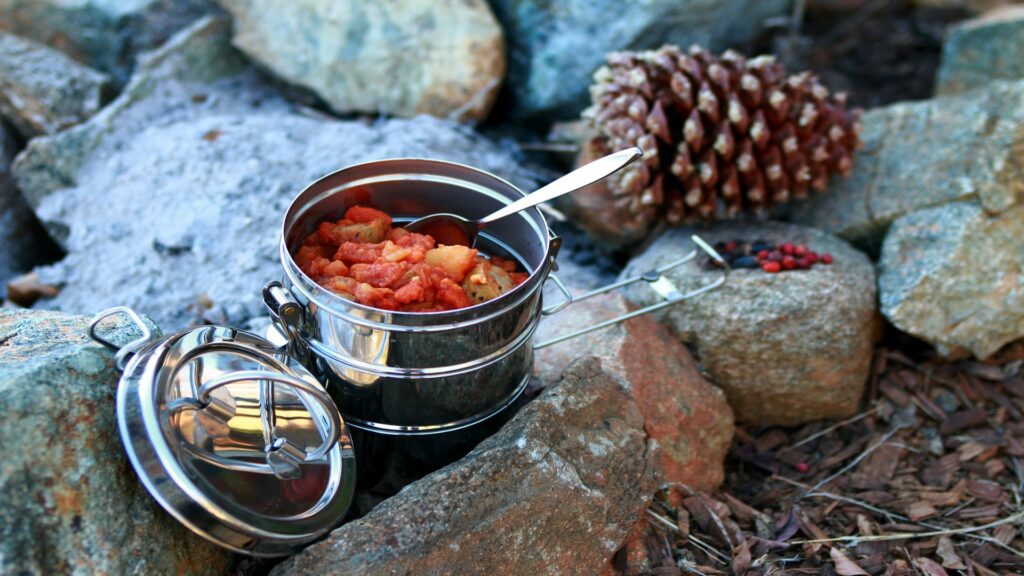
Establishing a proper cooking area is critical for bear safety and should be located at least 100 yards downwind from your sleeping area. Designate a specific “kitchen triangle” with separate areas for cooking, eating, and washing dishes to contain food odors to one manageable zone. Consider using a tarp above your cooking area to prevent food scents from being carried upward by heat and dispersed more widely by air currents.
After each meal, thoroughly clean all cooking equipment, utensils, and dining surfaces with biodegradable soap and hot water, straining all food particles from dishwater and packing them out with your trash. When meal preparation is complete, change out of cooking clothes—which inevitably absorb food odors—and store them with your food supplies rather than bringing them into your tent.
Proper Food Storage Techniques
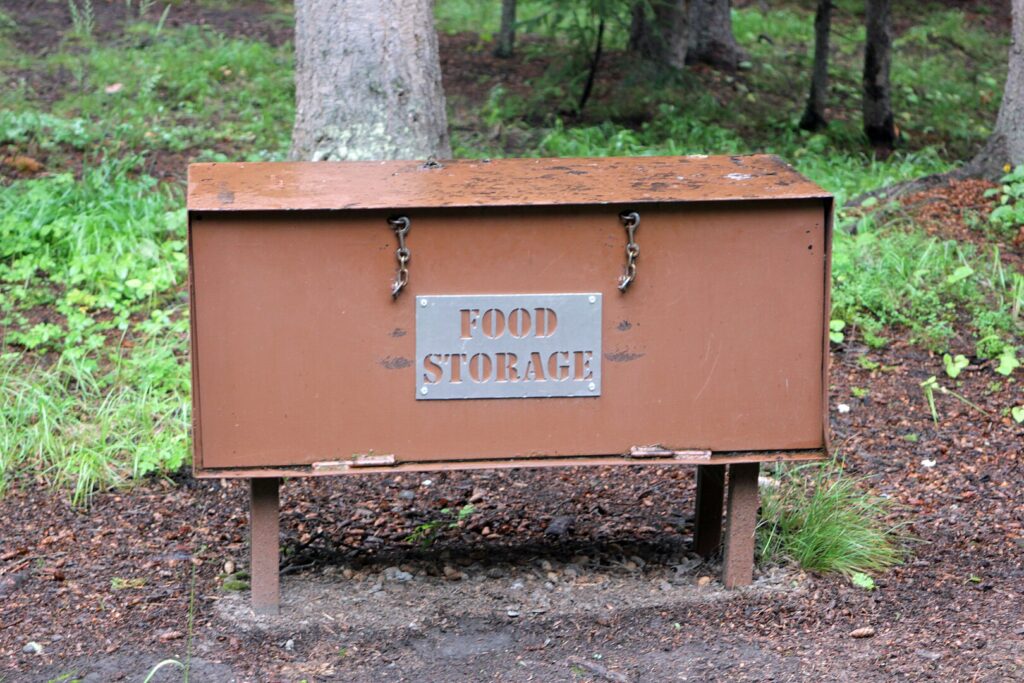
Effective food storage is perhaps the most critical aspect of camping safely in bear country with your family. The governing principle is straightforward: if it has a scent, it must be properly secured. Store all food, cooking equipment, trash, toiletries, and scented items in bear-resistant containers or hang them using the counterbalance method at least 10-15 feet high and 4 feet from any vertical support. In many national parks and established campgrounds, bear boxes or poles are provided—always use these when available rather than relying on your own hanging system.
Create a detailed inventory of all scented items before your trip and establish a clear system for tracking what items are in use versus secured storage at all times. Teaching children the importance of proper food storage through a “bear safety scavenger hunt” can make learning these critical habits fun while reinforcing their importance.
Teaching Children Bear Safety
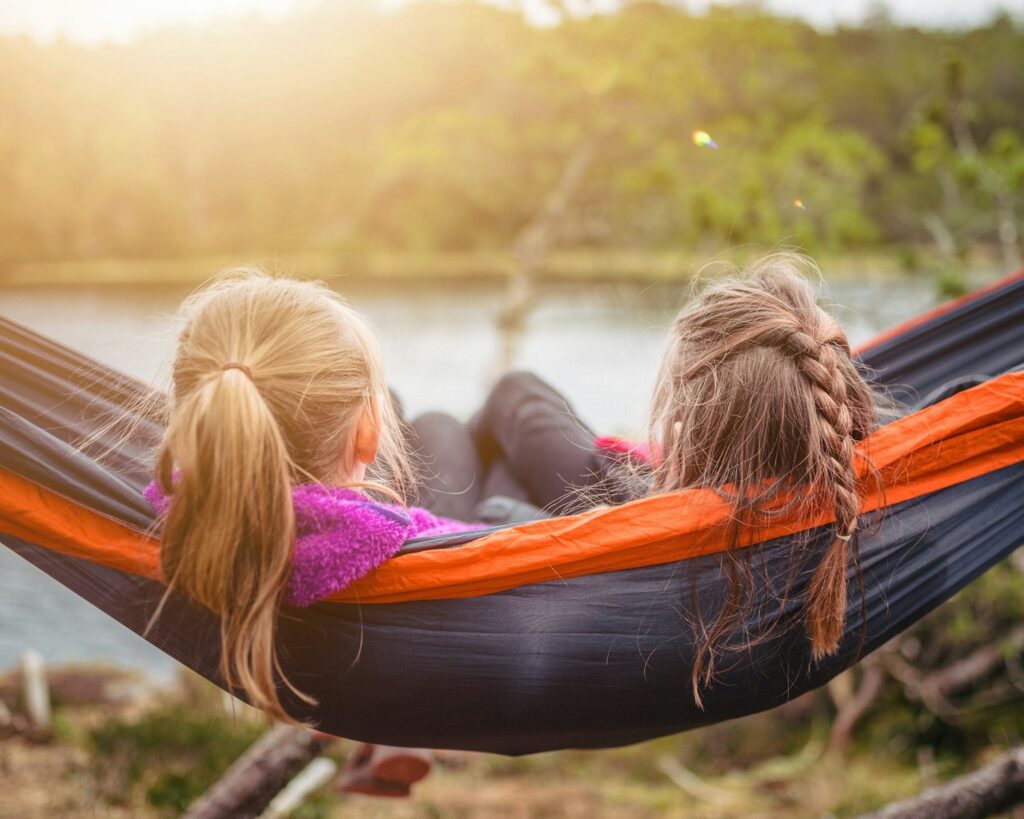
Educating children about bear safety should begin well before your camping trip and continue throughout your wilderness experience. Create age-appropriate lessons that emphasize respect for wildlife rather than fear, explaining that bears are typically more afraid of humans than we are of them. Teach children to identify bear signs like tracks, scat, and claw marks on trees, turning safety education into an engaging wildlife detective activity.
Establish clear rules about staying together as a family, never approaching wildlife, and what to do if they spot a bear—stand still, stay calm, and alert adults immediately. Role-playing different bear encounter scenarios at home before your trip can help children internalize proper responses and reduce panic if an actual encounter occurs. Consider creating a child-friendly rhyme or song about bear safety that younger children can easily remember and repeat.
Making Noise on the Trail
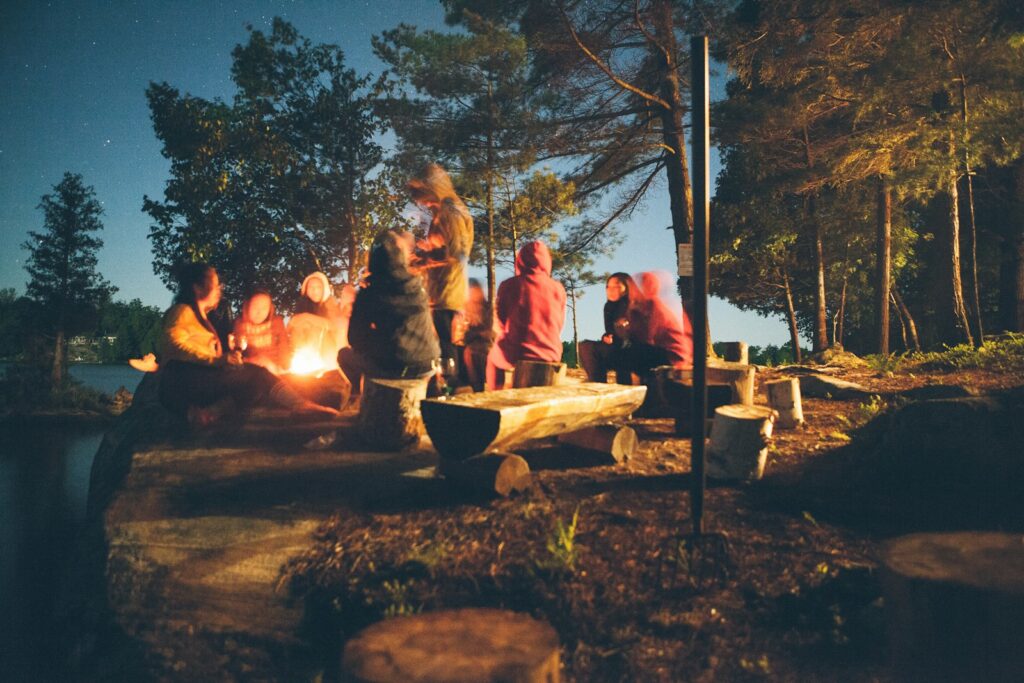
When hiking in bear country, making appropriate noise is one of the most effective ways to prevent surprise encounters, as bears typically avoid humans when given adequate warning. Encourage children to be “bear bells” by singing, clapping, or talking loudly while hiking, particularly in areas with limited visibility such as dense vegetation or around loud streams. Commercial bear bells can be fun for children, though experts note that human voices are actually more effective at alerting bears to your presence. Be especially vigilant about making noise when approaching blind corners, dense thickets, or berry patches where bears might be feeding.
While maintaining conversation is important, teach children to also stay alert and aware of their surroundings rather than becoming completely absorbed in games or singing. Remember that appropriate noise-making isn’t about being disruptively loud, but rather about providing consistent sound that alerts wildlife to your presence well before you arrive at their location.
Bear Encounter Protocols for Families
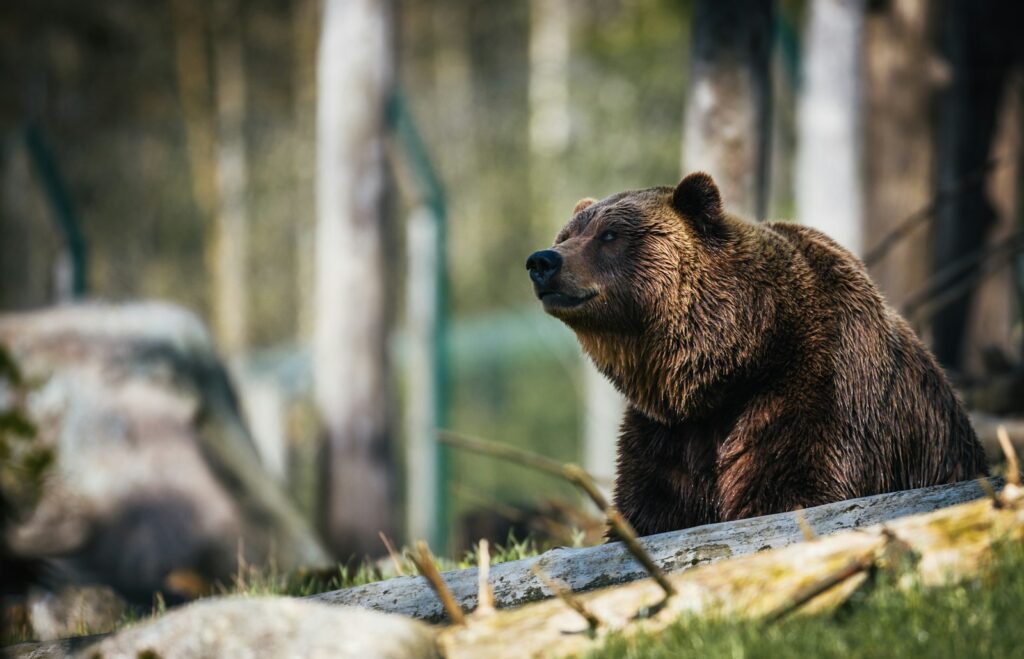
Preparing your family for a potential bear encounter involves establishing clear protocols that everyone understands and can follow calmly. If you spot a bear at a distance, quietly gather your children and back away slowly as a group, giving the bear plenty of space and an escape route. In case of a closer encounter, teach family members to stay together, make themselves look larger by raising arms or opening jackets, and speak in low, calm tones while slowly backing away—never running, which can trigger a chase response.
For children old enough to understand, explain the difference between defensive and predatory bear behavior, noting that most encounters involve defensive bears that will leave once they no longer feel threatened. Establish a family signal word that means “bear spotted” which can alert everyone without causing panic, and practice your response plan regularly throughout your camping trip.
Emergency Bear Deterrents
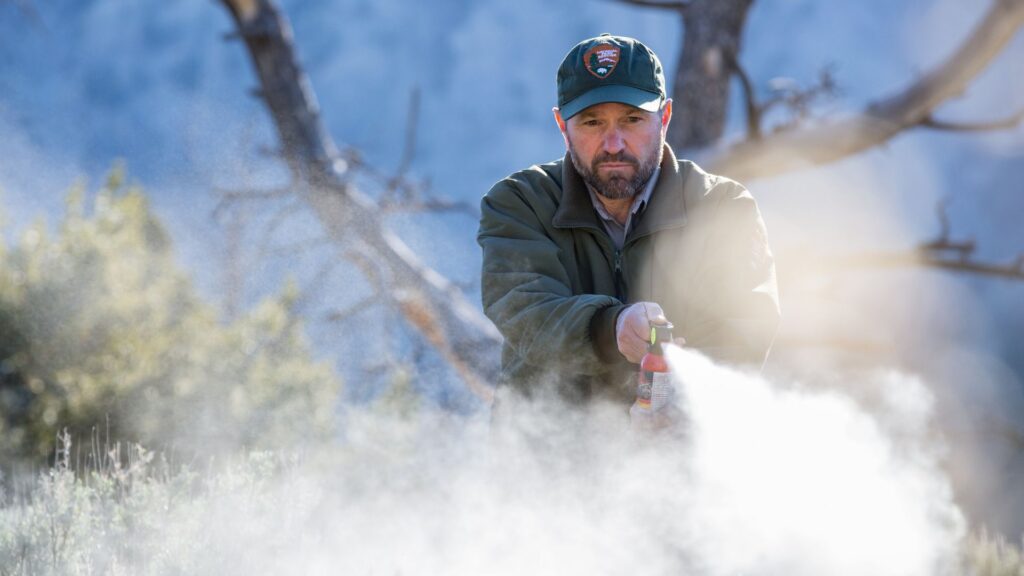
While avoidance is always the best strategy, carrying proper deterrents provides crucial backup protection when camping in bear country. Bear spray (containing capsaicin) is the most effective portable deterrent and should be carried by each adult in an easily accessible holster—not buried in a backpack. Teach older children and teenagers where bear spray is kept and how it works, though emphasize that only adults should deploy it.
Practice removing the safety clip and proper spraying technique before your trip, noting that effective use requires spraying a cloud between you and the approaching bear when it’s within 30-40 feet. Understand that bear spray is not repellent to be applied to people or equipment; rather, it’s an emergency deterrent only deployed when a bear is approaching. For nighttime protection, consider carrying compact air horns which can startle bears without requiring the precision needed for effective bear spray deployment.
Night Safety Protocols
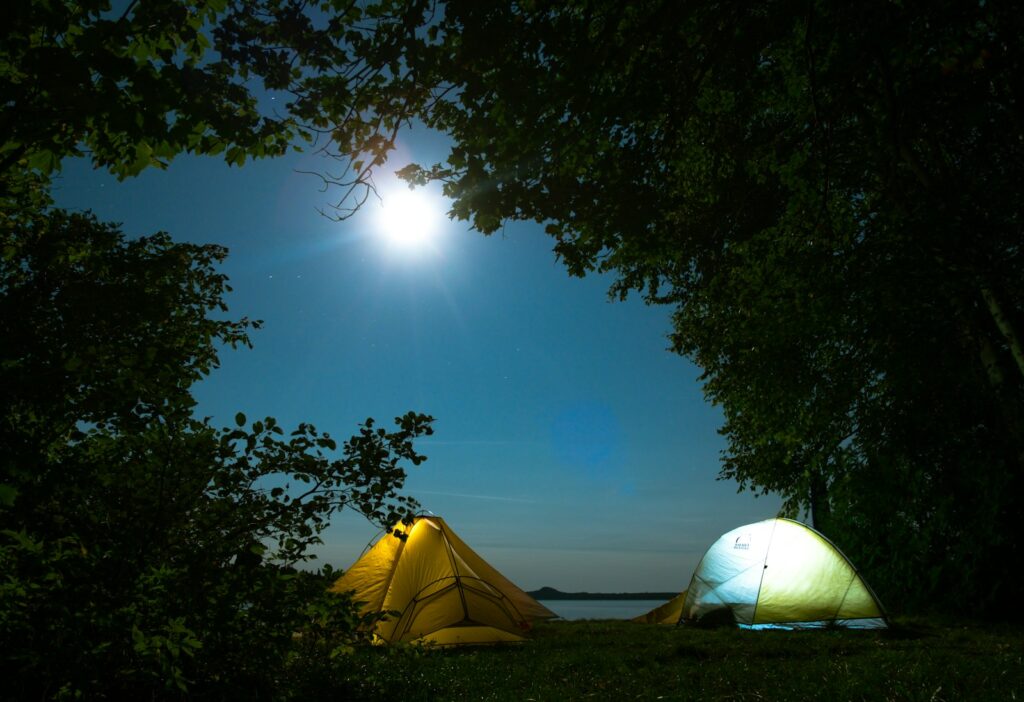
Nighttime in bear country requires heightened awareness and specific safety protocols to protect your family. Before dusk, ensure all food preparation is complete, dishes are washed, and all scented items are properly secured in bear canisters or hanging systems. Establish a designated bathroom area at least 100 yards from your sleeping area, and accompany children on nighttime bathroom trips with flashlights and bear spray.
Consider implementing a buddy system where no family member—even adults—ventures out alone after dark. Keep headlamps or flashlights readily accessible in each tent, and consider having children sleep in the center of the tent arrangement with adults positioned in tents at the perimeter. While proper food storage typically prevents nocturnal bear visits, maintaining quiet conversation after dark allows you to listen for potential wildlife movements around your campsite.
Leave No Trace Principles in Bear Country
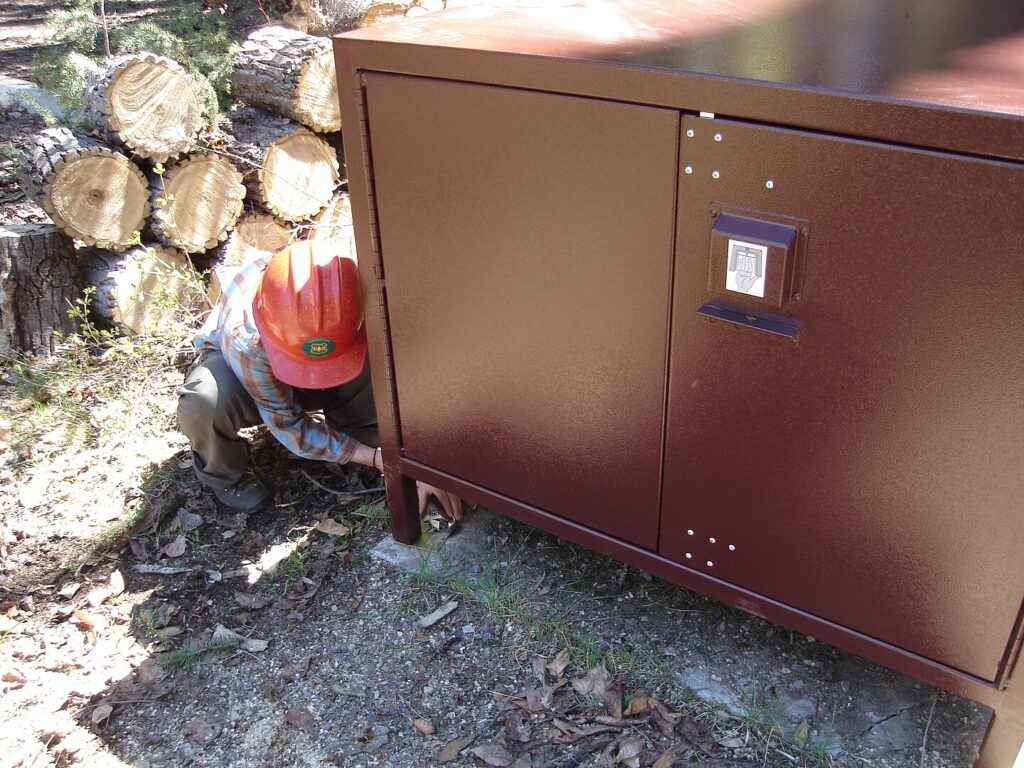
Practicing Leave No Trace principles takes on added importance in bear country, where proper waste management directly impacts wildlife behavior and human safety. Pack out absolutely all trash, food scraps, and grey water from washing dishes—even small crumbs can attract bears and condition them to associate campsites with easy food. Dispose of human waste properly by digging catholes at least 6-8 inches deep and 200 feet from water sources, or using provided facilities at established campgrounds.
Never burn food packaging or scraps in your campfire, as residual odors can linger and attract wildlife long after you’ve departed. Before leaving your campsite, conduct a thorough sweep of the area with the entire family, challenging children to find any overlooked items as small as a dropped piece of trail mix or forgotten wrapper, understanding that these seemingly insignificant items can create problematic wildlife associations.
Creating Positive Wildlife Experiences
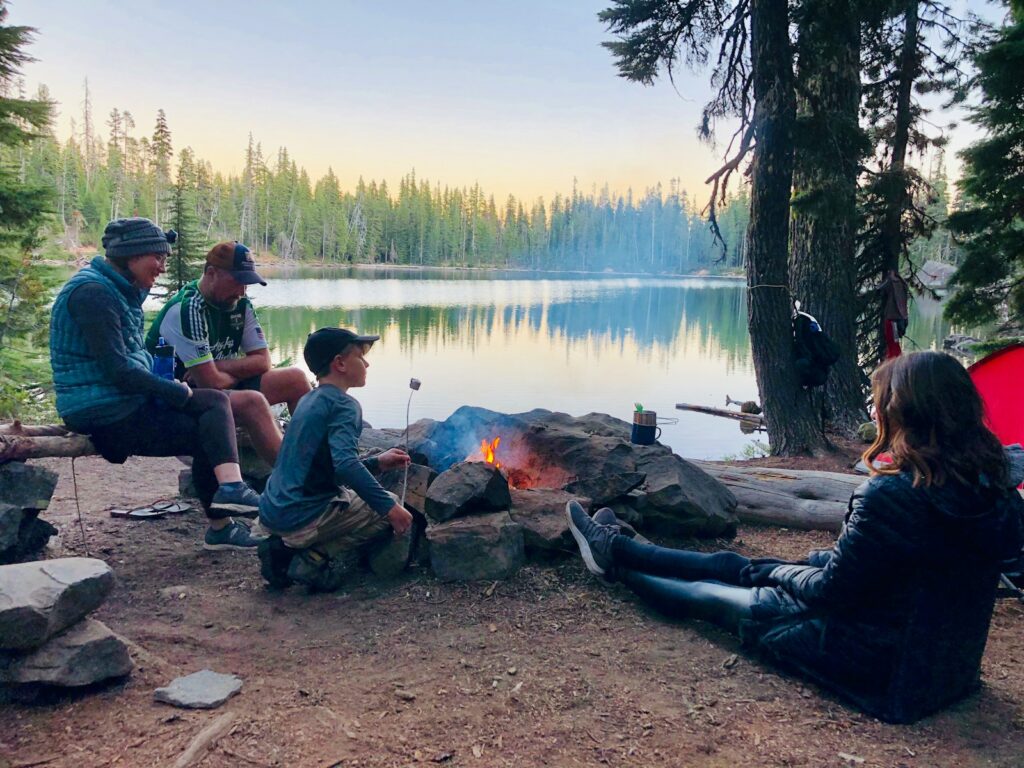
While bear safety is paramount, camping in bear country also offers incredible opportunities for children to develop appreciation for wildlife and conservation ethics. Bring along quality binoculars and wildlife identification guides appropriate for your children’s ages, encouraging observation of animals from safe distances. Maintain a family wildlife journal where children can record animal sightings, tracks, or other signs they observe during your camping trip.
Discuss the ecological role bears play in maintaining healthy forest ecosystems, such as dispersing seeds through their scat and controlling insect populations. Frame safety practices not as fear-based restrictions but as ways of showing respect for wildlife by allowing animals to maintain their natural behaviors and distance from humans. These positive educational experiences can instill lasting conservation values while creating meaningful connections to nature that children will carry throughout their lives.
Conclusion: Bear Country Camping Create Lasting Family Memories
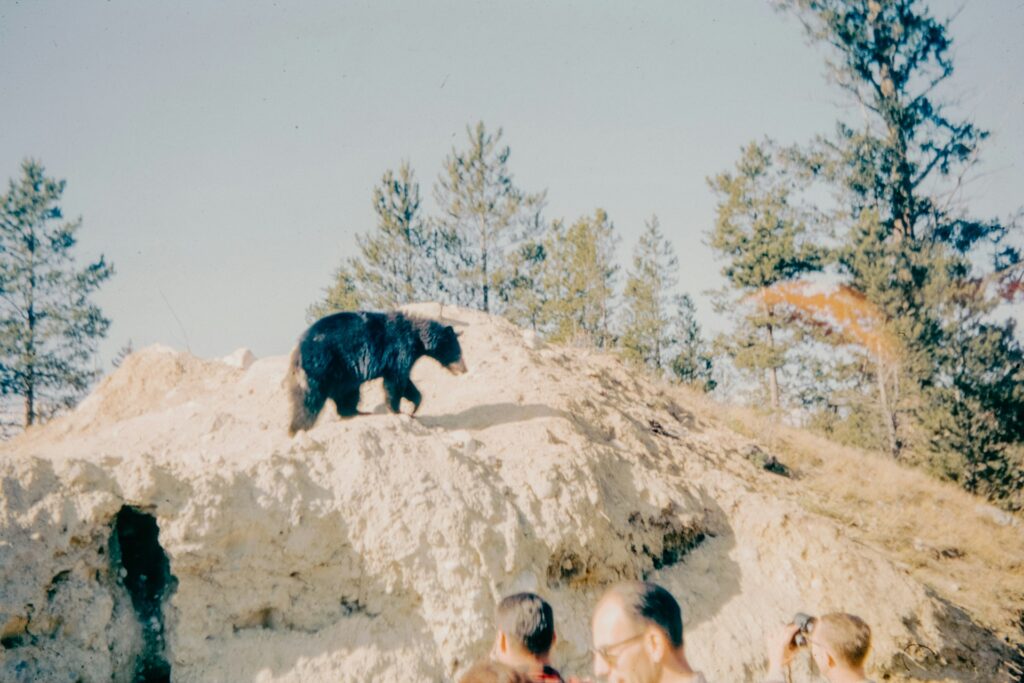
Camping in bear country with your family creates unparalleled opportunities for wilderness immersion and natural discovery when approached with proper preparation and respect. By understanding bear behavior, selecting appropriate campsites, using bear-resistant gear, and teaching children wildlife safety protocols, families can minimize risks while maximizing enjoyment. Remember that bears aren’t villains but vital components of healthy ecosystems that deserve our respect and distance.
The lessons children learn about coexisting with wildlife during these adventures often become cherished life skills and conservation values that extend far beyond your camping trip. With the right knowledge and equipment, your family can safely experience the awe-inspiring wilderness that bears call home while creating lasting memories of responsible outdoor adventure.

